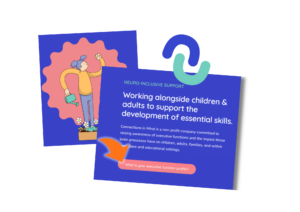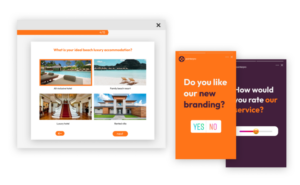Customer service quiz
What makes a happy customer – and have you got it? Finding out the answers to these questions must be high on a customer service team’s list of priorities.
After all, if your customers’ trust and like your organization, its sales will be stronger, its reputation will be greater, and it will retain good staff members more easily. So, what do they think right now?
It could be painfully clear that your service isn’t great, but you might not be sure how to improve it. On the other hand, you may be streets ahead of your competitors when it comes to customer satisfaction, but you wonder how long that will last.






Curious how it works? Give it a go!
Pointerpro’s customer service quiz offers you:
Pointerpro’s customer service quiz offers you:
Full white label option
No trace of Pointerpro anywhere! Custom URLs and custom branding options make mobile assessments look like a custom-made native app. All thanks to our white label option.
Faster feedback
Instant results allow you to quickly analyze the data you’ve collected and use the insights to improve your customer service.
Serious set-up functionalities
Build, sculpt and craft your quizzes to take on every kind of situation. Awesome features like Offline Mode, Multiple Languages or Save on exit will make your quiz creation feel like a dream.

Why build a customer service quiz?
While customer service tips are considered as best practices, customer service training is key for upgrading your support skills to deal with different types of customers and deliver higher satisfaction.
The customer service training aims to improve soft skills, like communication and emotional intelligence, but also technical skills, including typing speed and software knowledge.
Training programs come in different flavors – customer service training manuals, courses, tests, e-books or workshops. But a well-thought-out interactive quiz can give you a clear indication of the quality of your customer service.
8 Customer service tips to become a support hero
- Always put yourself in customer’s shoes. When dealing with difficult customers and their perplexing requests, the ability to put yourself in their shoes is key to help them without starting a conflict. Always put yourself in customer’s shoes. When dealing with difficult customers and their perplexing requests, the ability to put yourself in their shoes is key to help them without starting a conflict.
- Use positive language only. Stop using “I can’t”, “I don’t know” when you’re helping the customer. Instead, focus on what you can do to help your customers.
- Keep your cool. Often, you need to handle a difficult customer who is irritated and blame you for all the world’s evil. First and above all, remain calm and don’t let a customer see you’re boiling inside. Second, remember that you are there to help the customer, not to take the blame.
- Focus on solving the issue. Doing small talk is a good way to build connections, but let’s face it: solving the problem is the most important thing in customer service.
- Use different support channels. ”Please send us a mail.” does not work anymore. Your customers are present in various channels, so should you. Being available via live chat, phone, email or social media reassures your customers that you’ll be there when they need you.
- Resolve the case as fast as possible. When you want to deliver the WOW effect, focus on responding to customers as fast as possible. There is a direct correlation between the speed of response and customer satisfaction. So the faster you respond, the happier your customers are.
- Never stop improving your skills. It’s crucial to never stop working on your customer service skills. The best way to do it is to train yourself regularly. Whether you prefer e-learning, workshops or certifications, is up to you.
- Automate repetitive actions. Make your work easier by automating some of your routines. Tired of getting the same question ten times a day? Create a reply template and use it when appropriate.
Here's what our customers say
3 important tips
Avoid yes or no types of questions, this can lead to making the wrong decisions when taking conclusions from your feedback results. After receiving your results, use the correct benchmarks to determine how to implement change e.g. If you notice 10% of your attendees said they did not eat the lamb roast, maybe it was because 10% was vegetarian and not 10% did not like the roast.
Send out your feedback assessment immediately after the event. This way the event will still be fresh in the attendees’ minds, enabling them to give an actionable, detailed report on their experience.
Know your attendee. Ask some demographic questions such as age, gender, nationality etc. This way you’ll know which group of people to market to in the future and which people are less likely to attend your event next time.
Recommended reading
5 best practices for your survey results presentation: A guide for consultants, HR professionals, marketers and more
In today’s business world, understanding your customers is crucial. Collecting data can be challenging, but

How Connections In Mind benefits the community interest through a digital mindset and a longitudinal assessment
The fact that communities benefit from diversity should not be news to anybody. One type

How to create effective poll questions: A short guide for HR, marketers and customer service experts
Do you want to interact with your audience to learn more about them, but don’t
Create your first interactive questionnaire today.


